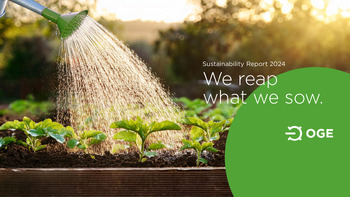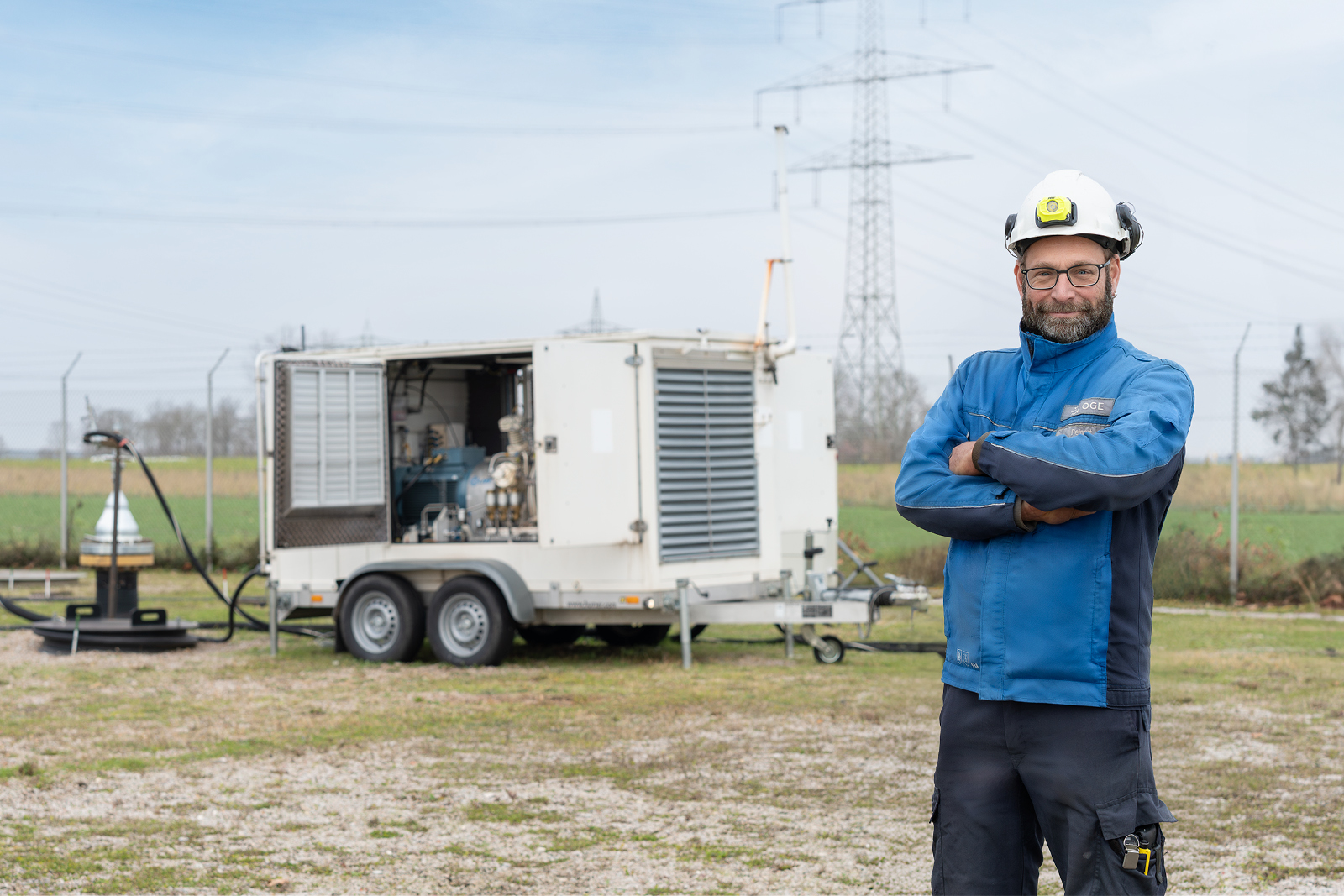
Energy & emissions
Green is not only the colour of hope – but also our future
We are not merely hoping for a green future, we are shaping it. We see ourselves as an important player in Germany’s energy transition and are convinced that green gases like hydrogen will be part of the energy mix of the future. Reducing greenhouse gas emissions is a big challenge for all energy consumers worldwide – and that’s true for OGE, too. Germany wants to be climate-neutral by 2045.

Target: zero emissions
“We don’t allow leakage when we carry out repairs.”
Christian Reinert, Maintenance Specialist for Technical Operations
Ambitious targets, extensive measures
Avoid, reduce, offset
The general principle for dealing with greenhouse gas emissions is first to avoid and reduce, and then to offset. To this end, OGE is planning measures to avoid and reduce Scope 1 and 2 emissions, which will be gradually implemented by 2045:
- Optimisation of network control
- Reduction of methane emissions
- Green electricity and biomethane
- Optimisation of compressor units
Results to date
The success of the measures to reduce emissions in 2009 to 2024 is measurable: In 2024, CO₂e emissions were more than 60 % below the emissions of the reference year 2009, thus falling below the target value planned for 2025.
The diggers take a break for bee-eaters.
Animal - nature - human
A rare migratory bird, a conversation between neighbours, and a renaturalised stream: Even the biggest projects show just how sustainable construction can be when it comes to the details. When OGE commissions work along a 216-km stretch that is to be dug up, fitted with pipes, and connected with compressor stations, with thousands of workers involved, then there’s only one way it’s going to be done: with the least possible impact on the environment.
The mindset behind this kind of approach stems from a strong belief that a company can only act responsibly when in harmony with the whole environment – animals, nature and people. Implementation begins on the first day of the planning phase – and only ends years after commissioning.

Let’s talk!
“I’m happy to talk to local people so that we all get strong infrastructure.”
Anika Leimbrink, Project Spokesperson
In the sustainability report, in the chapter on ecology, you can read in detail about everything else we do – with AI in network control, with mobile small compressors for maintenance work, for construction projects, including in moors, and other measures. And what goals we have achieved by 2024.


